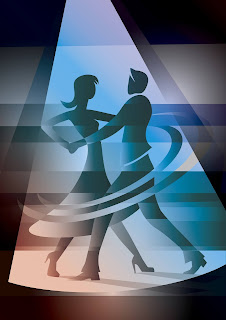Annabelle
1975
When I first saw Annabelle at the cemetery
(the one above the woody cliff
overlooking Lake Michigan)
I sat quietly, drinking in her solemn devotion.
I used to visit the cemetery
early summer mornings,
quietly sitting with the dead,
propping myself up
against the cool back
of a concrete slab.
Annabelle didn’t see me,
I was down low, back against a stone
diagonal to the grave where she knelt.
A sad but striking figure in
blue jeans and green silk blouse,
soft brown hair resting below her shoulders.
She had the look of an artist:
deep lonely Van Gough eyes
that looked beyond with melancholy joy
ready to turn to sadness.
She laid flowers against the headstone.
I can’t say what kind;
I don’t know flowers well,
I just know the petals;
blue and white with black pinstripes
Annabelle did the sign of the cross and stood up to leave.
As she walked away, toward the empty woods
of the former McCormick estate –
haunted and undeveloped after thirty years –
I had to go over to the grave and see.
“Cecilia Martin” the headstone said;
Cecilia died a year ago that day.
I stood at the grave imagining young
Annabelle, a child sitting at Cecilia’s side.
The stories Cecilia must have told her:
horse led trolley cars
down the streets of Chicago;
butchers and meat packers;
families sitting on their stoops
those hot summer nights.
I know this because
Annabelle told me
when I followed her into the woods.
I stalked her like a deer –
not to harm her
but to ask questions.
I must say I startled her as she stood silently
by the empty foundation
of the old McCormick mansion.
She turned around with cagey fright.
Loose chunks of concrete
lay on the ground beside her.
Rebar stuck out of the concrete
bent and rusted like
old, crusted bones
in a shallow grave.
“Do you come her often?”
(I swear to God, those were
my first words to Annabelle.)
“I saw you at Cecilia’s grave,”
I added as an introduction.
“You knew my grandmother?”
“No, but I was hoping you’d tell me.”
And believe it or not,
after some convincing,
she did.
Lake Forest was her home –
servant of the rich meat packers
and industrialists of Chicago,
the likes of Armor, Swift,
Pullman and McCormick
who had private railcars
and huge wooded estates with ivy
growing up their marble walls.
Cecilia was a maid and house-
servant to the Paxton family –
tea in the afternoon, tucking
the children in at night.
When the Paxton children were tucked in
she would tuck her own children in.
Her husband passed after the
second daughter was born.
That’s when she found the Paxton’s,
moving into a two-bedroom apartment
above a carriage house adjacent
to the splendored stone mansion.
Cecilia saw the rise of the
industrial revolution through the
most wealthy and majestic recipients
of America’s great and holy harvest.
Powerbrokers congregating at cocktail parties,
trips to the lakeside pool and golf club –
the life of Riley and Riley’s wealthy offspring.
But the Paxtons loved Cecilia like a mother,
and she always had a second mother’s role
in the life of the family.
When Cecilia retired,
she received a nice pension,
and when Mr. Paxton died
she received a generous inheritance
and bought the simple home she’d been
renting after retirement.
Her two children moved out and up long ago –
and now had children of their own.
Annabelle, she was Cecilia’s prize granddaughter.
Cecilia bounced Annabelle on her knee
loving her freely without the burden
of a mansion to clean or family to bed;
Annabelle was her golden years.
Cecilia sent beloved Annabelle
to college (Lake Forest College)
and Annabelle stayed with her
in Cecilia’s humble home on
the east end of the Chicago &
Northwestern railroad tracks.
When Cecilia was sick, Annabelle was
nurse and maid and house servant.
Now Annabelle owns the home
but she’d rather have Cecilia.




